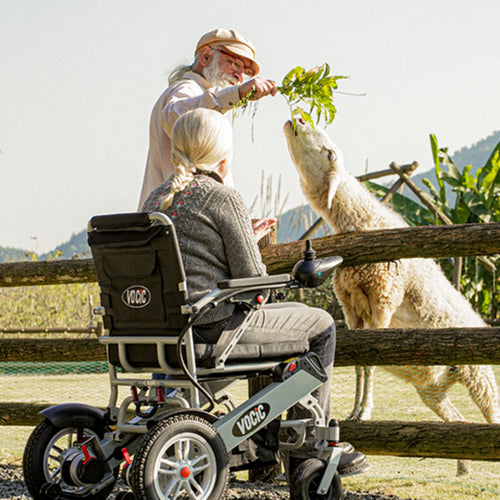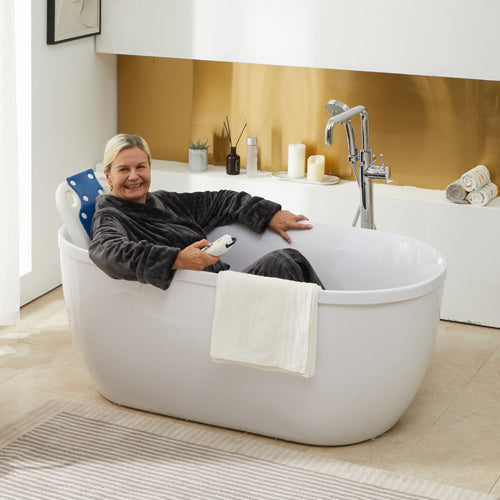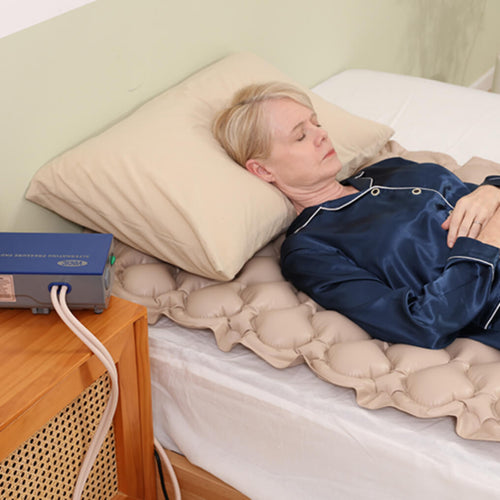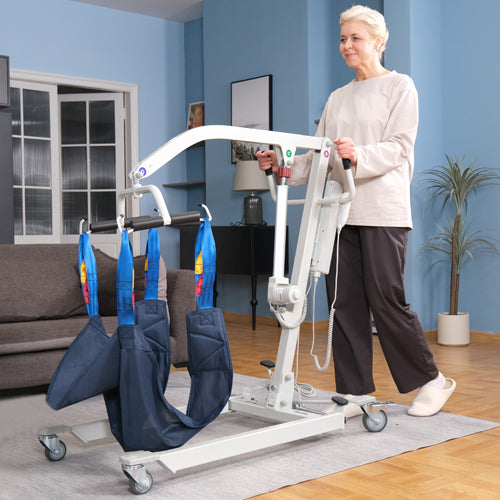For seniors and those with mobility issues, using a travel walker with a seat can reduce muscle strain and pressure. But bringing these 4 wheel walkers on planes can be confusing. VOCIC offers some tips to make air travel with a walker more convenient. This includes choosing a lightweight folding travel walker with a seat, consulting local airport personnel for rules, and dismantling easily lost parts. And for safety, this article also provides some safety tips.
Can you Take a 4 Wheel Walker on a Plane?
According to the U.S. Department of Transportation, you're allowed to bring your assistive device, such as canes, walkers, wheelchairs onto the airplane and store it in the passenger compartment at the following locations:
- In an overhead compartment;
- Under the seat in front of you; or
- In a designated stowage area if the device fits and is in accordance with FAA or foreign safety regulations.
Additionally, it's recommended that you contact the local airline in advance to inquire about the latest regulations.
5 Tips on Air Travel with a 4 Wheel Walker?
Here are 5 tips if you have air travel with a walker, tips include, choosing the right walker, preparing your walker for flight, navigating airports and boarding procedures, arriving at your destination, and tips for a smooth travel experience.
1. Choosing the Right Walker for Air Travel
Lightweight and Foldable 4 Wheel Walker
- A lightweight walker can alleviate the burden of travel.
- A folding travel walker can easily be stored in cramped spaces on airplanes or other modes of transportation, such as cars, buses, and so on. Additionally, a collapsible walker won't take up storage space at your travel destination or hotel room.
Considerations for Size and Pouch
- A 4 wheel walker that's too large may not fit in the cabin, potentially causing inconvenience or additional shipping fees.
- Opt for a walker with a pouch to store items during travel, such as sunscreen, an umbrella, water, snacks, medication, etc.

2. Preparing Your 4 Wheel Walker for Flight
Security Measures and TSA Regulations
When going through security, you may need to disassemble or unfold your 4 wheel walker for inspection. TSA will conduct a security check on the walker to ensure there are no hazardous items inside and to confirm that the walker meets safety regulations.
Packing and Securing the Walker for Transport
- When traveling with a walker, consider providing additional packaging protection, such as using a specialized walker travel bag or cover. This can effectively prevent scratches, impacts, or damage to the walker during transport.
- Mark your personal information on the 4 wheel walker, such as your name and contact details, to prevent the walker from being lost or confused with others.
- On the airplane or other modes of transportation, try to place the 4 wheel walker in a location where you can observe it, or ask staff to assist you in storing the walker to ensure its safety.
3. Navigating Airports and Boarding Procedures
Accessibility Considerations
The accessories of the walker, such as the pouch, cane holder, brake line, wheels, stand holder, and adjustment button, may risk loss or damage during travel. Therefore, it's advised to disassemble and package them separately. You can inquire with the product vendor for walker installation and disassembly videos. If you are a VOCIC rollator walker user, you can click here to learn how to install and disassemble a walker.
Boarding Assistance and Priority Seating
- Many airlines offer assistance boarding services to avoid waiting in line and provide additional support to ensure a smoother travel experience.
- Many airlines offer priority seating to passengers needing assistance devices or those with mobility impairments. These seats are usually located in the front rows of the cabin or near emergency exits, providing more legroom and comfort.
4. Arriving at Your Destination
Retrieving Your Walker and Luggage
After disembarking, don't forget to retrieve your 4 wheel walker. Check the labels with your name and contact information to avoid confusion with other people's walkers when retrieving yours.
Assistance Available at the Destination Airport
- Pay attention to the signs and signboards, directing you to the airport service desk or designated assistance service area to obtain the necessary help and support.
- If your travel walker is damaged or lost during the retrieval, please ask for help from airport staff.

5. Tips for a Smooth Travel Experience
Communicating with Airline Staff and TSA Agents
When traveling with a walker on a plane, it's important to communicate with airline staff and TSA agents. Be sure to call them of your needs in advance, prepare necessary documents, follow security regulations, maintain politeness and patience, and arrive at the airport early to ensure a smooth boarding and security process.
Anticipating and Addressing Potential Challenges
- For instance, familiarize yourself with the airline's regulations regarding the carriage of walkers, including size, weight, and safety requirements.
- Consider potential emergencies, such as walker damage or loss. Develop contingency plans in advance and have backup strategies in place to address any potential challenges.
What Precautions Should be Taken with a Travel Walker with a Seat?
During your travels, please note the below safety tips:
- Choosing flat, spacious, and obstacle-free walking paths to avoid uneven surfaces or obstacles.
- Avoid placing excessively heavy items on the travel walker to maintain stability and safety during use.
- Maintaining good posture while standing or sitting on the travel walker with a seat.
- Being vigilant of pedestrians and traffic around you, and avoiding collisions with others or objects.
- Always use the brakes to secure the travel walker when it's stopped to prevent sliding or movement.
- Regularly inspecting the walker wheels, brakes, seat, and other components for any damage or wear and tear, and deciding whether to use it based on its condition.
For more information on how to properly use a 4 wheel rollator walker, you can click on '4 Wheel Rollator Walker: Using Tips for People with Walking Limits.'
Conclusion
According to regulations, a rollator walker is approved for international air travel. To ensure safety and a smooth travel experience, it's advisable to contact local staff in advance, select an appropriate size, label it when checking it in, and promptly contact airport staff in case of damage or loss, among other precautions.









